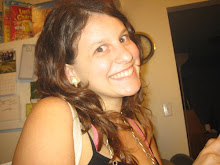
While watching Robot Chicken's Season 2 DVD, I came across this...um... piece of 'coal' in a mist of diamonds. This disapoints me in a way I cannot describe. I generally love Robot Chicken and find the show hilarious... I absolutely love and crave the crazy low-fi stop motion aesthetic. It's hard to make slap-stick comic timing in stop motion animation and do it well. They do that.
But... back to what I was posting, RAPE IS NOT FUNNY! When I watch my Robot Chicken DVD, I need to fast forward this every time: It's a short skit and parody on Snuggles commercials. The bear does his cute and cuddly thing and a man, who was doing his laundry, starts touching him. He's says things like "Ooooh, you're soft." and starts rubbing the bear more... the more aroused the man gets the more terrified and uncomfortable the bear gets. Eventually the man takes Snuggles into the bathroom and you can hear everything... which is insanely disturbing. You hear the guy raping the bear, and the bear obviously not liking it, saying things like "This is a no-no!" while the guy responds with "Don't fight it." while raping him. Then the man stuffs Snuggles in the washer then dryer and is ready to go again. Snuggles is twitching and is distressed by what happened. The man starts taking him back to the bathroom, while Snuggles says 'No! No!" And then the guy takes him back in the bathroom while the Snuggles/Cuddles bear is constantly saying "No! This isn't right." Then a man's voice comes up and the word 'Cuddles' appears on the screen like a commercial saying: "Cuddles brand fabric softner...when your clothes have to be huggably, rapeably, fresh."
I realize that this is a parody of Snuggles fabric sofner and understand why the majority of Robot Chicken's target audience would find it funny. It exhibits the natural animated violence coupled with humor tactic by removing the human quality of the even itself to make it funny. The only reason why it is 'supposed' to be funny is because the object being raped is a talking stuffed bear. After the bear is raped, it's supposed to be funny that it exhibits obvious trauma over the aid experience and then it's raped again. How could anyone possibly think that's funny? All it's doing is removing the true trauma of rape and victims of rape to make a joke. NOT FUNNY!






